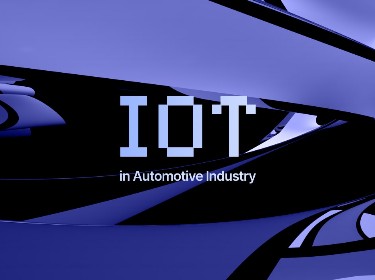Various electronic systems are gradually replacing filing cabinets and computer desktop folders. Progressive companies know for sure that digitalization is one of the key factors in success. But what software is really capable of transforming business processes?
In a digital age where payments can be made by a mobile phone and even elections are held without printed ballots, many offices are still drowning in paper. The problem is much wider than just generating waste: using paper documents leads to inefficiencies in workflow, decreases productivity, and makes collaboration extremely difficult. As well as this, paper documents are prone to damage and pose security risks to businesses.
At the same time, enterprises also have concerns regarding the security and safety of electronic management systems, as loss of documents and data breaches may cost companies a fortune and ruin their reputation.
How to safely move away from a physical hub where all documents are stored and get the most out of electronic document management systems and content management software? Let’s find out!
EDMS, ERMS, and ECM: what are they?
EDM, ERM, and ECM are not musical genres, as they might seem at first glance.
EDM stands for electronic document management, ERM means electronic records management, and ECM – enterprise content management. These are three basic system types that offices worldwide are implementing.
In simple terms, electronic document management systems are software designed to handle documents that are in process. Users can create, capture, edit, revise, approve, store, and retrieve documents, and process images. An EDMS allows office workers to conveniently organize and track document versions and collaborate on them.
Electronic records management systems deal with records, that is, documents that serve as proof of transactions, company’s actions, and decisions. When records get into the system, they’re already complete, and cannot be edited or changed. This is the biggest difference between EDMS and ERMS.
The capabilities of ERMS include records declaration, registration, management, and maintenance. Electronic records management systems also have the functionality to assign retention rules depending on the type and content of the records. Once the records expire, for example, or no longer have any business value and are not involved in a legal audit, they can be destroyed or transferred to the controlling legal authority.
Enterprise content management is an even broader phenomenon than document and records management. Enterprise content management systems provide tools and methods for capturing, storing and managing the content of literally all types and forms. These can be invoices, contracts, letters, research reports, and even CVs. As well as the functionality available in EDMS and ERMS, ECM systems also offer web content management, collaboration, and digital asset management tools.
Industries where you can apply EDMS, ERMS, and ECM
![]()
Business success depends on many factors, of which driving innovation and continually rethinking how to improve workflows and information management are among the most important. Thus, the implementation of advanced enterprise document management solutions contributes significantly to a company’s overall development and success.
Since absolutely every enterprise deals with documents, electronic systems can be used in any industry. Let’s take a closer look at some of them and see what exactly EDMS, ERMS, and ECM can do there.
Government
Stating the obvious, but nonetheless: governments create and use A LOT of documents. Given that public sector organizations must document every action, they encounter plenty of challenges, such as document version tracking, securing and protecting sensitive data, timely document retrieval, and long-term archiving.
A good electronic document management software can address these issues and improve the services provided to citizens. With a well-tuned EDMS, ERMS, and ECM, governments can track changes to documents, customize processing and routing rules for document approval and distribution, assign user quotas and track their actions with each document, and generally enjoy the convenience of managing an infinite number of records.
Blockchain is also capable of transforming government processes. See for yourself!
Healthcare
Clinics and hospitals are striving to digitize tons of legacy information and manual forms to make life easier for healthcare professionals and patients. Document management systems designed specifically for the healthcare industry can help speed record creation and retrieval, provide secure document storage, improve workflow efficiency, and reduce the time and cost typically spent on information management.
If documents can be quickly created and found in the system, never lost or leaked, then patients will also be much happier with the service.
Finance
Banks and other financial service providers can use electronic document management systems and enterprise content management solutions to convert document images and manage records, thereby enabling faster processing and facilitating the exchange of information between branches. Electronic systems make it easier to find information and protect data with strong access rights and document sharing policies.
Engineering
Firms that provide engineering services usually deal with drawings and technical documentation, which later need to be digitized. These drawings and records may have multiple versions and updates. In order to ensure version control and facilitate information sharing within the company and with customers, engineering and construction businesses can apply EDMS, ERMS, and ECM. Specialized solutions can process and organize documents that include drawings, schemes, and calculations.
Legal
When it comes to document management, law firms are especially concerned with document security and regulatory compliance. Electronic document management systems in the legal industry enable better management of sensitive information, allow companies to set role-based access to docs, and reduce the risks of non-compliance.
Find out about this document notarization solution that digitizes powers of attorney
Supply chain
EDMS, ERMS, and ECM in logistics and supply chain management capture documentation in every possible form: emailed, photographed, scanned, etc. These can be contracts, customs forms, shipping documents, and even drivers’ working schedules. Document management solutions can significantly speed up workflows and track the logistics of each shipment instantly and transparently.
The list of industries in which electronic document and records management systems can be applied is in fact endless, so we will stop there and get straight to the analysis of EDMS, ERMS, and ECM to explore their benefits and check out real-world software examples.
Electronic document management systems in detail
Poor document management affects a company’s overall productivity, performance, and profitability. It’s the year 2021 and technology rules the world, but office workers still complain about problems with documentation.
A survey by Nintex found that 49% of employees have trouble finding documents, 43% struggle with approving and sharing documents, and 33% have problems with versioning. Another study shows that 92% of US and UK employees still review and collaborate on documents via email.
A well-designed electronic document management system (EDMS) effectively manages a company’s documents and helps it to remain productive and therefore competitive and successful.
Benefits of using EDMS
![]()
Once your business chooses and installs a robust enterprise document management system, you will be able to enjoy numerous benefits such as enhanced data security, role-based access, workflow automation, and more convenient collaboration.
Access control and security
Every company deals with confidential data which is only supposed to be seen by certain employees. A corporate electronic document management system is transparent and shows which users have accessed or modified files, while also offering strict access control features. This means that the network administrator can control access to information by assigning roles to employees, thereby reducing the risk of data breaches and accidental document loss.
When selecting your document management enterprise software, ask developers about security features and how access control is implemented.
Workflow automation
Manual processes, communication, and collaboration through email should all have become a thing of the past by now. Document management systems are designed to accelerate this digitization process and reduce internal issues by automating data retrieval and implementing templates for standard operations.
EDMS also implies automated reporting, that is, the ability to load business data into the system in real time, monitor all operational processes, and receive notifications when issues with documents arise. Electronic systems help direct documents to the right destination, track changes within them, and automatically update information.
On the whole, an enterprise document management solution automates manual and usually time-consuming tasks and processes.
Collaboration
By using electronic document management software, employees can view, approve, and modify documents much more quickly, efficiently, and conveniently. They can also work together on documents and check who has modified the doc and what exactly has changed.
Customization
There is no one-size-fits-all solution for every business as each enterprise is different and has its own needs and requirements. Thus, the electronic document management system should be able to be adapted for each specific company and then customized, since business needs may change over time.
It is also important to choose an enterprise document management solution that easily integrates with the company’s existing programs and tools.
In addition to the aforementioned benefits, EDMS also reduces the cost of archiving and storing documents, eliminates duplication problems, and provides a single point of access to company information.
Examples of enterprise document management software
The market for document management systems is slowly but surely growing: its market value was estimated at $3.59 billion in 2017, and is projected to grow to $6.78 billion by 2023.
Let’s take a peek at several leading electronic document management companies and their software.
DocFlow
DocFlow by PixelPlex is a blockchain-powered electronic document management software that digitizes the entire document processing cycle, excludes intermediaries, has a transparent document history with time-stamped blocks, and is always GDPR compliant. The solution uses advanced smart contract mechanisms to guarantee data authenticity.
The most essential feature that this software offers is uncompromised security. DocFlow protects data from hacking through encryption, hashing, and the blockchain itself. Multi-tier role-based and coded access also add an extra layer of security to the company’s data. When applying DocFlow, employees don’t need to worry about information safety anymore.
On the whole, the solution helps users easily track document usage, changes, and ownership, simplifies document processing, issuance, approval, and retrieval, and eliminates fraud using built-in proof of origin techniques.
eFileCabinet
eFileCabinet is a veteran of document management as the company was founded in 2001 and has been providing safe and convenient EDMS ever since. eFileCabinet literally mimics a filing cabinet where users in companies of all sizes can easily and securely capture, store, and share data and collaborate on documents.
The solution offers standardized filing structures for employees to work on docs seamlessly, workflow automation to increase productivity and save time and financial resources, and unparalleled accessibility to allow office workers to deal with documents from anywhere in the world. eFileCabinet offers on-premises and cloud solutions, giving companies the ability to select the best option for their enterprise.
eFileCabinet is also strong on data security and app usability at the same time. While they provide user-friendly accessibility features, their software is also supported by configurable safeguards.
The solution is a good fit for finance, HR, IT, legal, banking, healthcare, and insurance teams.
DocuWare
DocuWare provides secure cloud solutions for document management and workflow automation. This software eliminates the need for manual data entry and helps enterprises go paperless.
By implementing DocuWare, employees can set up automatic doc approvals and forward invoices to key decision-makers, easily locate electronic invoices and deliver them to authorized users only, and securely archive and organize all business-related documents in general.
This electronic document management software also offers format flexibility. It can process PDF files, emails, images, Microsoft Office files, and many more. Meanwhile, every record is AES encrypted and well protected.
DocuWare can be used in industries such as finance and accounting, human resources, sales, legal, and others.
The decision-making process can be automated too! Check out how this DMS enables executives to vote on and pass resolutions within one web application
Electronic records management systems in depth
![]()
Electronic records management and document management systems are two slightly different things, as the former deals with completed records and the latter allows employees to work with documents that are still in progress. However, we can see that the words “records” and “documents” are often used interchangeably, and some software does offer the management of both documents and records in the same system. Nevertheless, here we will take a closer look at an ERMS and its benefits separately from an EDMS.
ERMS and its advantages
When it comes to completed records, the most important considerations for enterprises are security, convenient organization and storage, and an opportunity to set a retention schedule. These can be found in a good electronic records management system.
The organization of automated records
Electronic records management systems automatically capture document metadata and use it to identify records and put them into specific categories, making them easier to find and retrieve. If an employee tries to add the same document to the system again, it will not work, since the ERMS will detect that this document already exists, and thereby rule out the possibility of document duplication.
Automatic classification is in fact a really important feature as it helps to avoid mistakes when declaring records.
Version control
Most ERMS offer version control to ensure transparency and traceability of the system. Office workers can edit documents, but the history of changes will still be saved and open to authorized network participants. If necessary, you can always recall and check older versions of the record and see who has applied changes to it.
Retention schedule setup
The ability to customize and set up retention schedules is one of the major features of an ERMS. When records are no longer needed for business or legal purposes, they are deleted or transferred to the legal authority. This avoids the system from becoming cluttered and enables employees to find the information they need.
In addition to that, electronic records management software increases productivity and accountability, ensures regulatory compliance, and speeds up decision-making.
Examples of electronic records management software
These days, electronic document management companies develop software that manages both documents in progress and completed records. Your company can choose existing software or develop a new system that works only with records, or the one that also allows you to manage documents that are still in progress. With the latter, you will get a 2 in 1 solution.
Laserfiche
Laserfiche has developed Laserfiche Records Management Edition (RME), which is DoD 5015.2-certified software. This records management system centralizes records, automates typically time-consuming tasks, and enables regulatory compliance.
The software automatically categorizes records by type and by their retention and applies disposition schedules to each of them, thereby simplifying work for employees and giving them more time for other important tasks. Moreover, workers get notified when a certain document is ready for disposition.
Laserfiche RME records management policies work across all devices, from mobile phones to desktops, by keeping only one copy of the record in a centralized repository.
Rubex
Rubex from eFileCabinet helps enterprises move to completely paperless document management. This is a file management and sharing solution with enhanced security, strong audit trail features, and solid optical character recognition (OCR) and search functionality designed for small and midsize businesses.
This convenient one-stop solution offers cloud and on-premise options. Using Rubex, employees can create document templates, view portfolios of the most often used docs, sign contracts with electronic signatures, and share records within the company and externally.
Authorized users can also easily set up document retention and compliance and check detailed document history since the system saves the entire history of all actions performed on each document.
Citrix ShareFile
Citrix ShareFile is also a reliable electronic document and records management solution suitable for small and medium enterprises.
Employees can utilize the system from any device and from anywhere on Earth as it is a cloud-based software with unlimited storage. Users can send, share, get approvals, feedback, and electronic signatures, and set a due date for documents within one application.
What’s more, this software makes it easy to collaborate with the team and an unlimited number of clients in real time.
As far as security is concerned, each client accesses their files through a unique and secure login. Meanwhile, bank-level encryption protects the company’s documents, records, and emails. The most sensitive data can be kept safely in virtual data rooms.
Discover Blockcerts – a platform for creating, issuing, and verifying digital documents
Enterprise content management inside out
The COVID-19 pandemic, self-isolation, the need to shift to remote working, and global digitalization have together generated a bigger interest in enterprise content management systems, especially those offering cloud-based software. According to ResearchAndMarkets, the global cloud enterprise content management market for 2020 was valued at $18.7 billion and is projected to reach $122 billion by 2027. This means that over the next 7 years the market will grow at a CAGR of 30.7%.
Well-designed enterprise content management solutions intelligently and securely store, organize, search, track, and retrieve all company-generated content, and bring numerous benefits to the organization and, importantly, employees themselves.
Benefits of ECM implementation
When choosing an enterprise content management system, a company should pay attention to whether the software ensures secure collaboration and efficient search, and how it helps to track changes in documents. These are the top three features to look for in a good ECM solution.
Secure collaboration
The collaboration feature should not be a special requirement for ECM software anymore, but the norm. Employees might work on one document from different departments, offices, or from home, so they must be able to collaborate on a record in parallel.
Where collaboration is possible, security must be improved as well. A good enterprise content management solution provides reliable user verification and allows only authorized members of the network to access and modify records.
Convenient search
Enterprise content management systems offer advanced and convenient search capabilities. Employees can search documents by their type, date, title, department, and even words used in the text. This feature ensures that employees don’t waste time searching for information and use their working hours efficiently.
History tracking
Since several employees might work together on documents and apply changes to them at the same time, enterprise content management software includes history tracking and storage. This way, authorized users can check who made changes and when, or who is updating a certain record at any given moment.
If an employee makes a mistake in a document, version control, and tracking features can help identify the wrong version of the record and roll back to the correct one.
Automatic detection of duplicate files
Enterprise content management systems can automatically detect duplicate documents, suggest deletion, and ensure that only a unique and most recent copy of the record is retained.
Other benefits and important features of ECM include customizable folders, format flexibility, lower operating costs, better customer service, and reduced security risks.
Examples of enterprise content management software
The list of ready-made solutions is huge and companies can choose the most suitable one depending on their enterprise size, goals, and needs. At the same time, if a company has specific ideas about creating a new platform, they can always turn to professional developers and bring the ideas to life nice and easy.
Let’s take a look at what the enterprise content management market is offering these days.
Alfresco ECM
Alfresco ECM is a flexible and highly scalable enterprise content management platform that is easy to integrate with existing business applications and can be customized to meet the enterprise’s specific needs. With this solution, employees can enjoy trouble-free document management, document scanning and capturing, information governance, and content analytics.
One of the most powerful features of Alfresco ECM is the ability to collaborate and annotate in real time. It is also possible to invite external users to work on the documents. Operating in this way increases productivity while maintaining a single source of reliable information, access control, and compliance.
This platform also prohibits emailing documents. Instead, employees can share content using public links.
OpenText
OpenText is a Canadian company specializing in enterprise information management software. OpenText develops and sells enterprise content management solutions, file sharing and ECM collaboration software, content archiving solutions, and document management systems.
With regard to ECM in particular, OpenText software provides numerous vital features such as a simple and intuitive interface, access to the most recent and often used documents, painless collaboration, and document search and retrieval in a matter of seconds.
OpenText ECM systems are also capable of addressing compliance issues. Their software enables information management without end-user intervention and automatically enforces retention policies and corporate governance regulations.
M-Files
M-Files is an enterprise content management tool that is great for small and large businesses across a variety of industries. Companies can choose from three deployment options: on-premises, cloud-based, or hybrid.
Like many other solutions, M-Files also tries its best to dissuade office workers from using their normal communication methods, in particular sending documents by email. All the processes related to content management are happening in one place.
In addition to this, the software detects duplicate files in different folders and archives and ensures that employees only deal with one version of a document. There are features for tracking history and restoring correct versions of documents if an employee makes a mistake.
The enterprise’s IT team also doesn’t need to worry about software updates because they take place automatically.
Hyland, Newgen, IBM FileNet Content Manager, MHC Software, and FileBound also feature among the leading enterprise content management companies.
Conclusion
Enterprise document management systems, electronic records management software, and enterprise content management solutions have become vital tools in work processes. They help employees organize documents efficiently, make records easier to find, detect duplication, and enable collaboration. By implementing these systems, companies save time, money, and nerves, and employees can therefore focus on more important tasks.
Although there is a plethora of ready-made EDMS, ERMS, and ECM, choosing the right one that will perfectly meet your business objectives and needs can be a bit of a challenge. We highly recommend considering customizable solutions such as DocFlow. This document management system can be fine-tuned for each specific business case and will bring numerous benefits: excluding intermediaries, providing transparent history whereby you can track document usage and ownership, ruling out fraud, protecting data at all levels, and so much more.
Reach out to our experts to learn more about this solution and find out how DocFlow can transform your business process.




